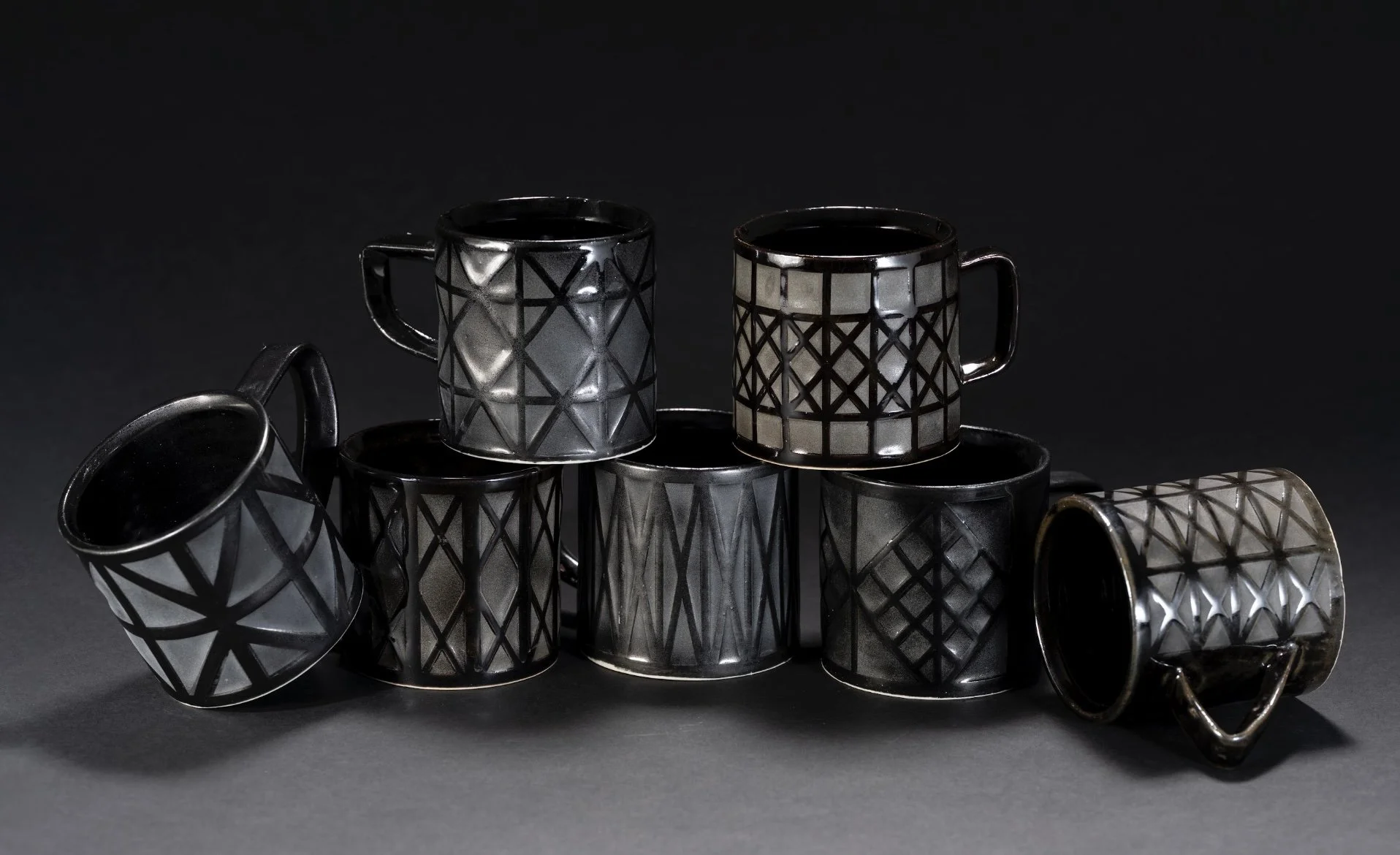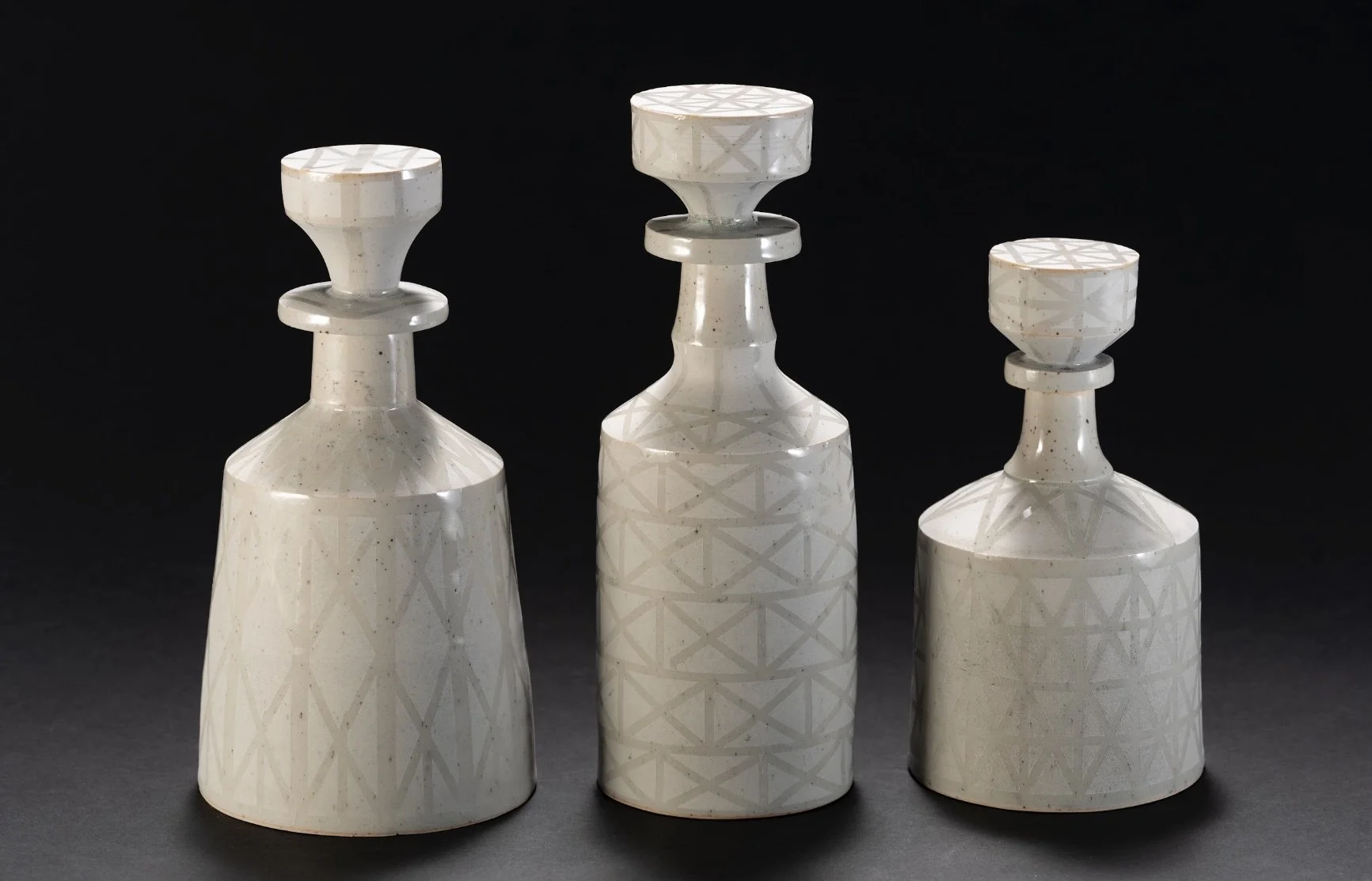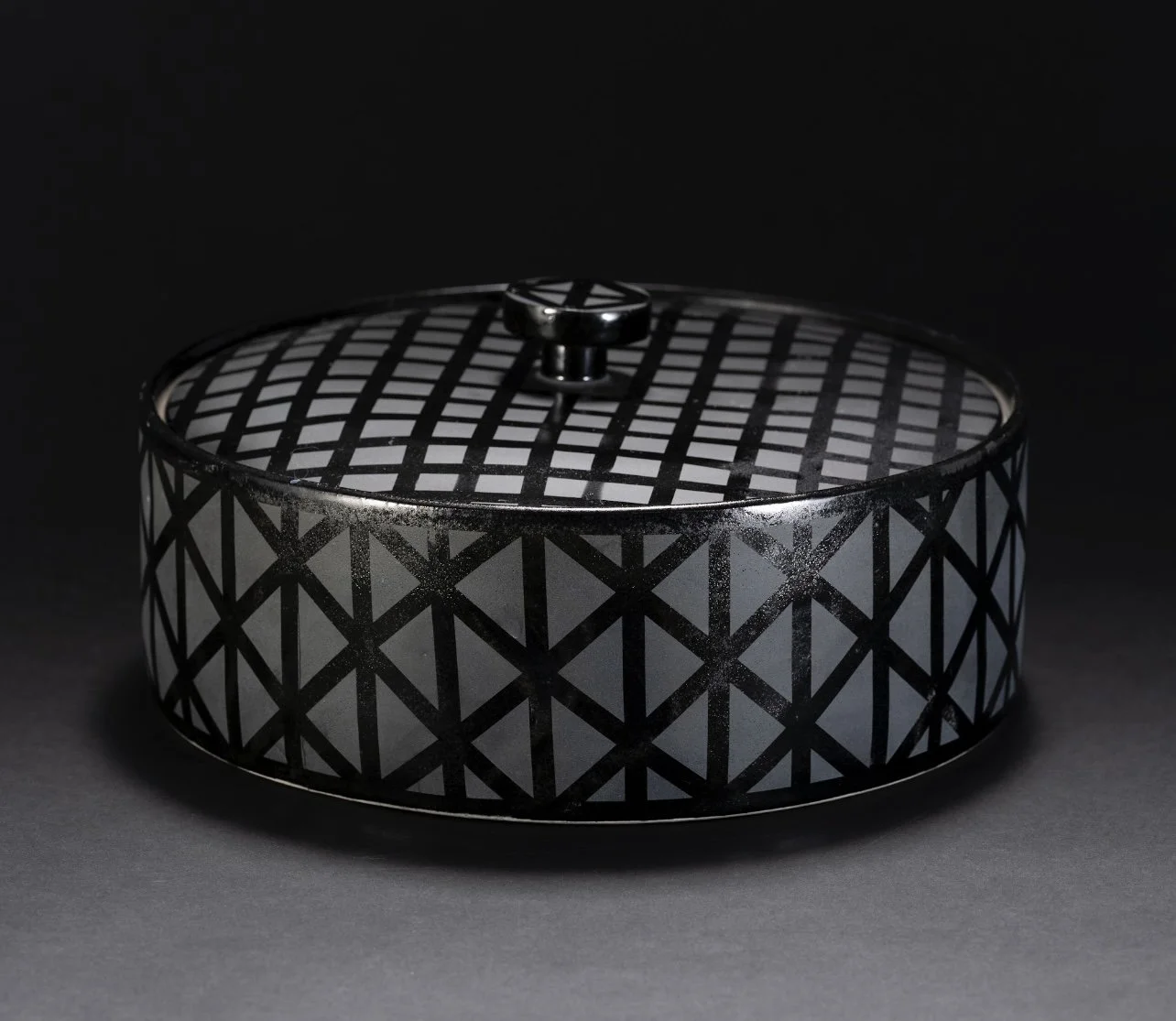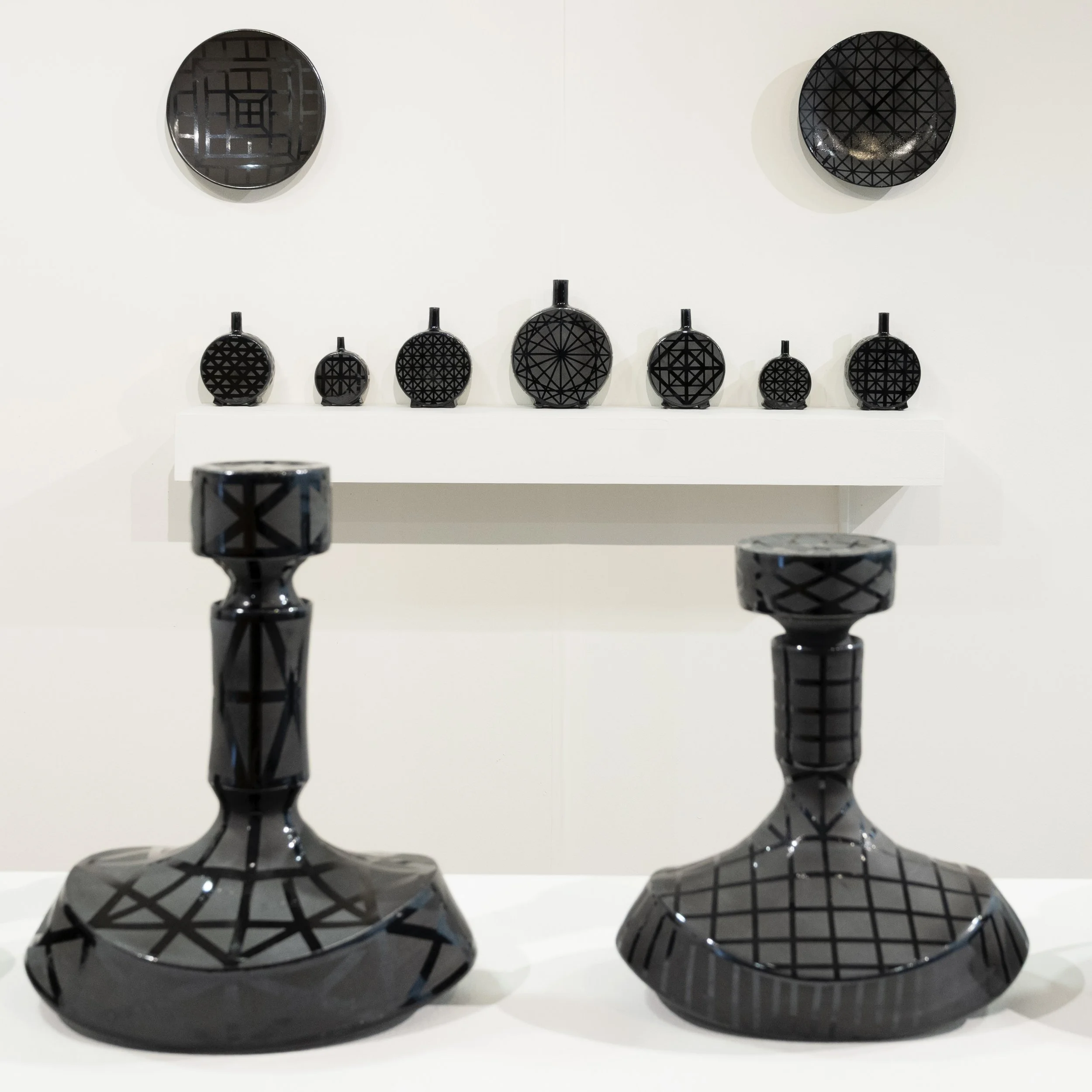This Thesis investigates the transposition of architectural principles into ceramic art, drawing inspiration from Western New York’s late 19th century and early 20th century architectural and craft traditions.
Through an exploration of symmetry and proportion, surface texture, materiality, and the dynamic interplay between light and shadow, this research examines how architecture influences not only the physical aesthetics of ceramic art, but also its atmospheric and emotional presence.
Recognizing how form is never static but continuously shaped by light and shadow, this artistic study is–at its core– defined by its environment and the viewer’s perception. This work aims to capture a dialogue between permanence and fragility, utility and ornament, order and entropy, revealing how architectural influences inform not only the aesthetic but also the conceptual foundations within my craft.



























